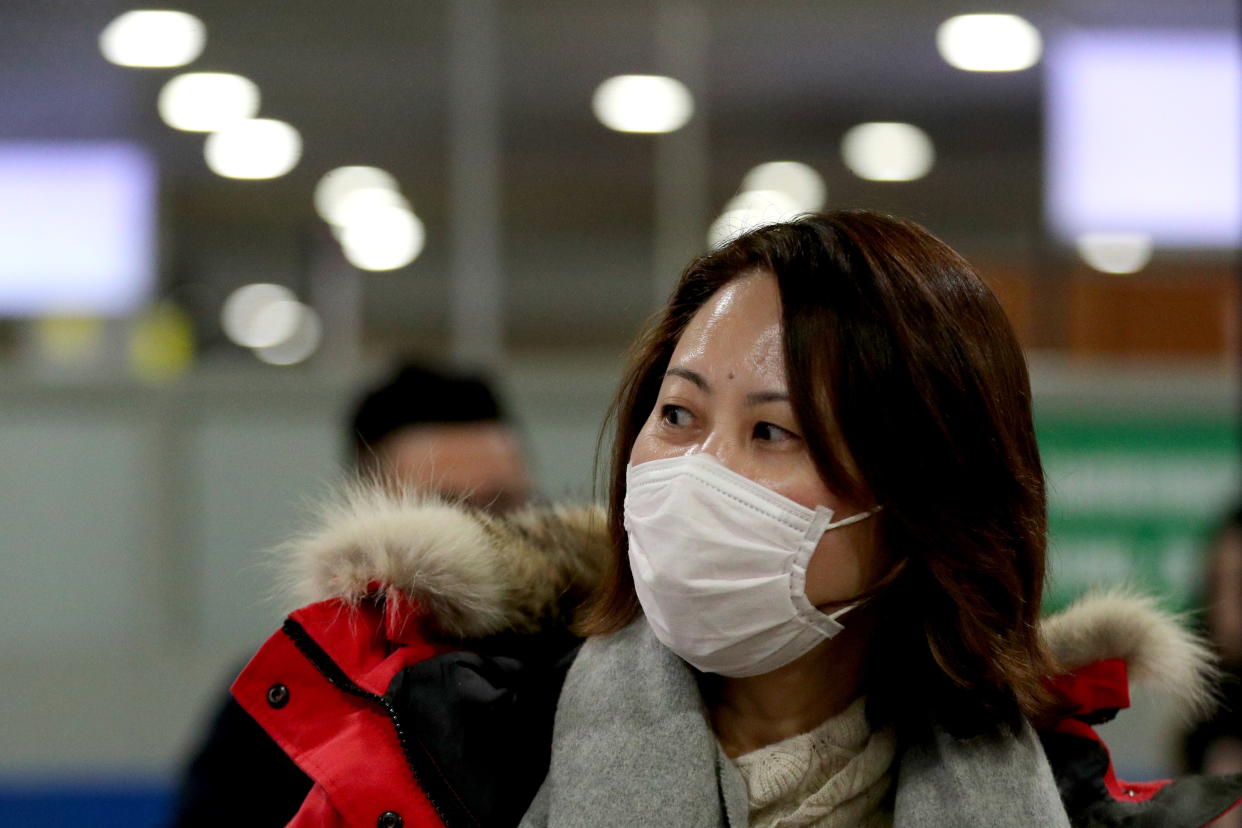China's coronavirus 'may be missed at airport screenings in newly infected travellers'

*The death toll was accurate at the time of publication.
China’s mysterious coronavirus may be missed at airport screenings, an expert warns.
The common class of viruses cause everything from mild colds to life-threatening severe acute respiratory syndrome (Sars).
Known as 2019-nCoV, the new strain has more than 440 confirmed cases so far, with 17 deaths.
READ MORE: Coronavirus: Government updates advice over fears deadly disease may spread to UK
The UK Department of Health has announced that passengers on flights from the Chinese city of Wuhan, the centre of the outbreak, will be checked for symptoms on arrival at London’s Heathrow.
Three flights a week directly connect the two cities, the BBC reported.
Airports in San Francisco, LA and New York have enforced similar measures, which will be expanded to Chicago and Atlanta this week.
However, an expert has warned it can take days for symptoms to develop, with newly infected passengers possibly “slipping through the net”.

“Border screening has a degree of effectiveness,” said Professor Neil Ferguson from Imperial College.
“They’re looking for fever at screening but if someone became infected two days before flying, they will have no symptoms at all.
“The border will still be porous.
“There’s a limited amount we can do.”
READ MORE: Billions of journeys for Chinese New Year raise fears coronavirus will spread
Like other strains of coronavirus, 2019-nCoV typically starts with flu-like symptoms, including fever, cough, shortness of breath and breathing difficulties.
It takes around five days for these to appear, with patients appearing healthy during this time, the BBC reported.
Warning signs can also be difficult to distinguish from seasonal flu, said Professor Calum Semple from Alder Hey Children's Hospital.
Experts believe the outbreak began at a live animal market in Wuhan, before spreading to Shanghai and Beijing.

Cases have also arisen in Japan, South Korea, Thailand, Taiwan and the US.
“Cases got through exit screenings in China,” Prof Ferguson said.
The Department of Health claims flights from Wuhan will land in an isolated part of Heathrow that “better lends itself to any health contingencies”.
A health team will be on hand to check for symptoms.
Passengers will also hear an announcement on board and be given a leaflet explaining what to do if they feel ill.
Unlike the Ebola outbreak of 2014, passengers are not thought to be having thorough medical screenings, which involved temperature readings.
As the death toll has risen, Public Health England has upgraded the UK risk from “very low” to “low”.
Chinese authorities advise against travelling to or from Wuhan.
What is the new coronavirus?
Most of those who initially fell ill worked at, or visited, the Wuhan market.
China's National Health Commission confirmed the virus can spread person-to-person.
Prof Ferguson claims Wuhan likely has around 4,000 cases, with health officials playing “catch up” when it comes to recording incidences, Yahoo UK reported.
Six previous coronaviruses are known to infect people, with this strain being the “seventh”.
The pathogens are common worldwide, triggering mild-to-moderate upper respiratory tract infections, like the common cold, according to the US Centers for Disease Control and Prevention (CDC).
In rarer cases, coronaviruses can lead to lower-respiratory tract infections, such as pneumonia or bronchitis.
These tend to occur in babies, the elderly or those with weak immune systems.
The 2019-nCoV fatalities are occurring as a result of pneumonia.
This comes about when a respiratory infection causes the alveoli (air sacs) in the lungs to become inflamed and filled with fluid or pus, according to the American Lung Association.
The lungs then struggle to draw in air, resulting in reduced oxygen in the bloodstream.
“Without treatment the end is inevitable,” the charity Médecins Sans Frontières says.
“Deaths occurs because of asphyxiation.”
READ MORE: New virus has 'same death rate as Spanish flu pandemic that killed 50m people'
2019-nCoV is not the first coronavirus that has got people panicked.
The Middle East respiratory syndrome (Mers) strain kills about three or four in every 10 patients, according to the CDC.
Sars also made headlines in the early 2000s after 774 people died across dozens of countries, mainly in Asia.
2019-nCoV has evoked memories of Sars, with genetic analyses revealing it is more closely related to the pathogen than any other coronavirus.
“Since Sars, global travel has doubled, but mainly short-haul flights,” Prof Ferguson said.
Some coronavirus strains only infect animals but can “jump” to humans.
They commonly spread via coughing, sneezing, shaking hands or touching a contaminated object.
The virus enters the body if contaminated hands touch the eyes, nose or mouth.
In rare cases, faecal contamination is to blame.
There is no specific treatment for coronaviruses, according to the CDC.
If the infection triggers pneumonia, doctors work to combat the complication.
When a virus is to blame – like 2019-nCoV – pneumonia may be treated via “antiviral medication”, according to the American Lung Association.
US health officials are working on a vaccine against 2019-nCoV; however, it will likely be months before the first stage of trials are underway and more than a year before it could be available to the public, CNN reported.
For now, the World Health Organization advises people avoid “unprotected” contact with live animals, thoroughly cook meat and eggs, and stay away from those with flu-like symptoms.


